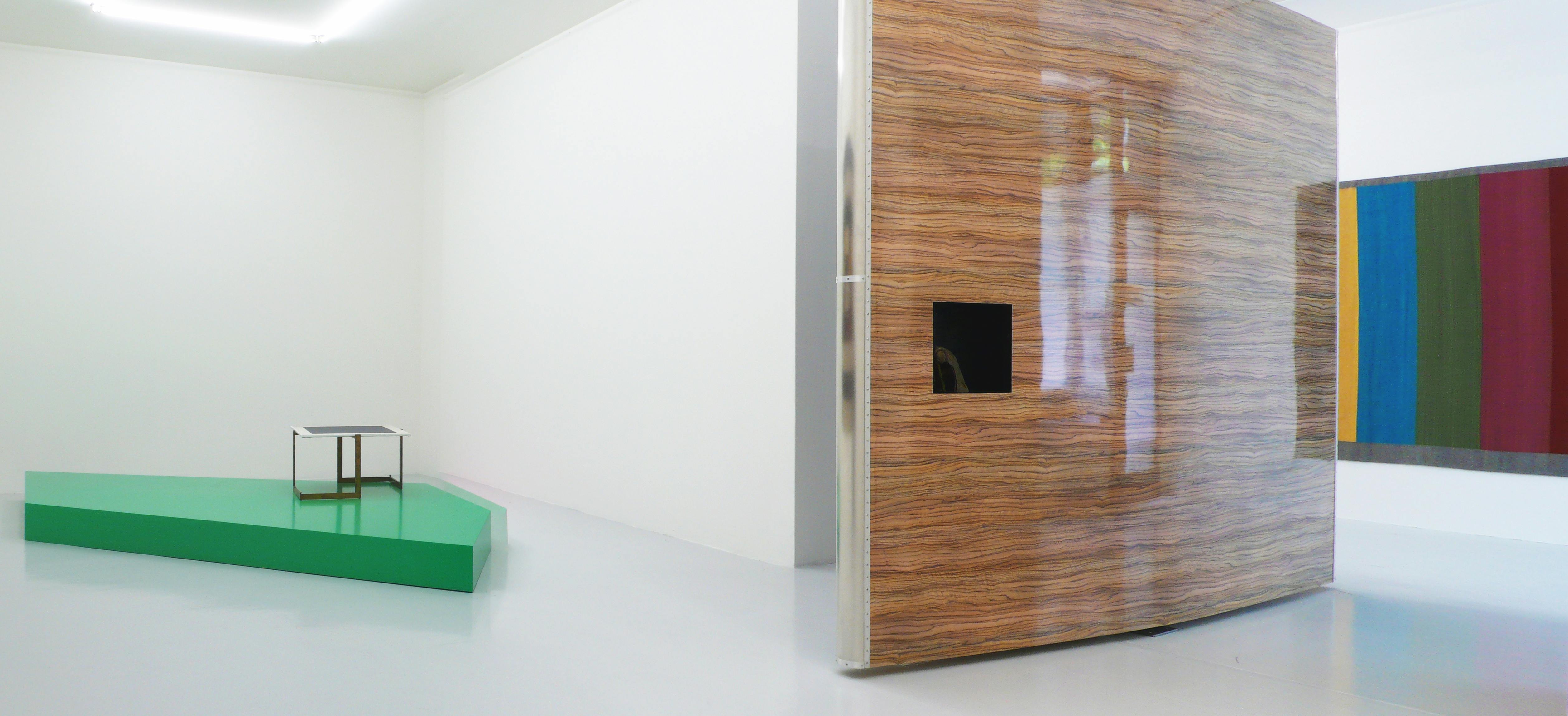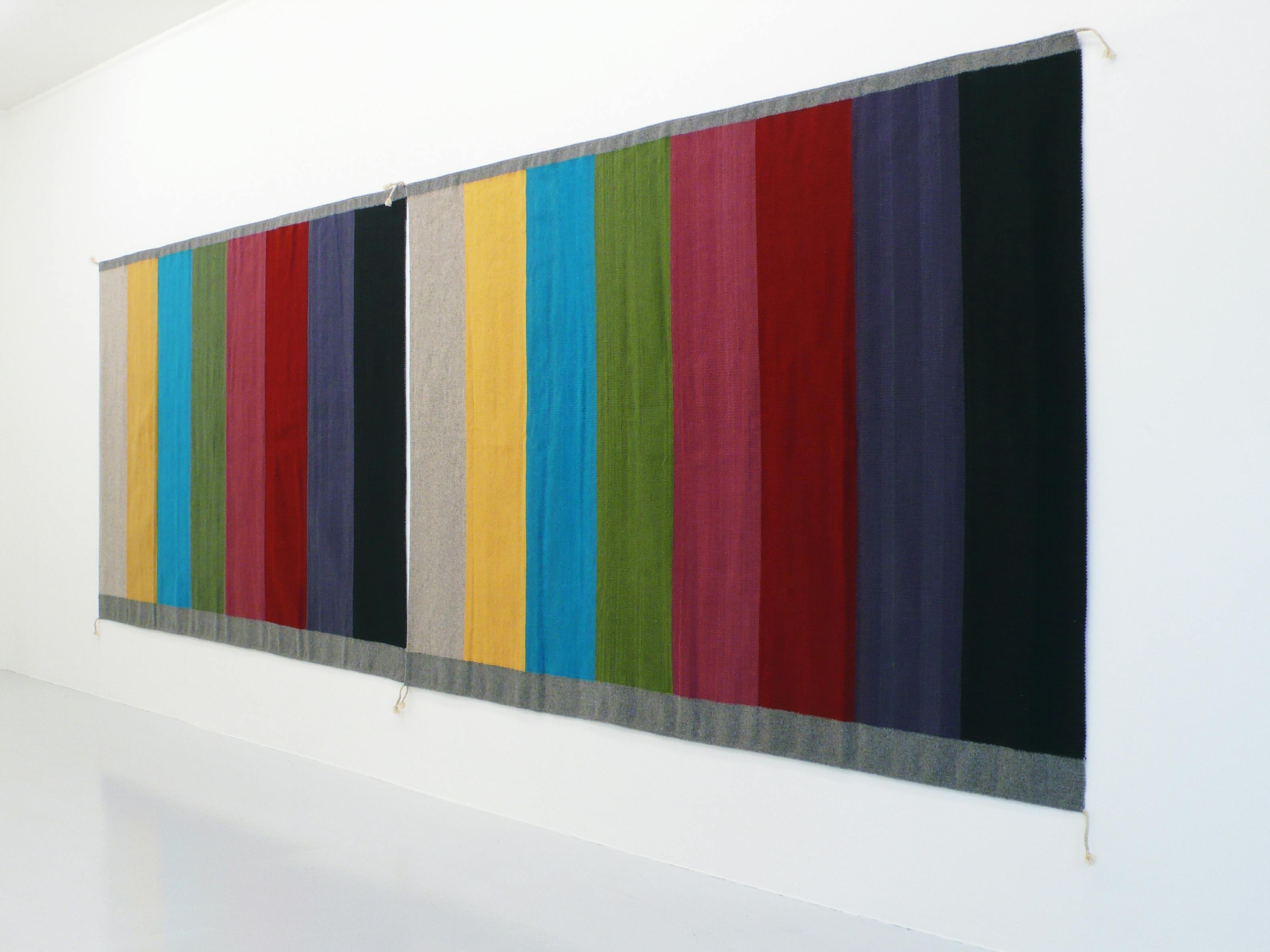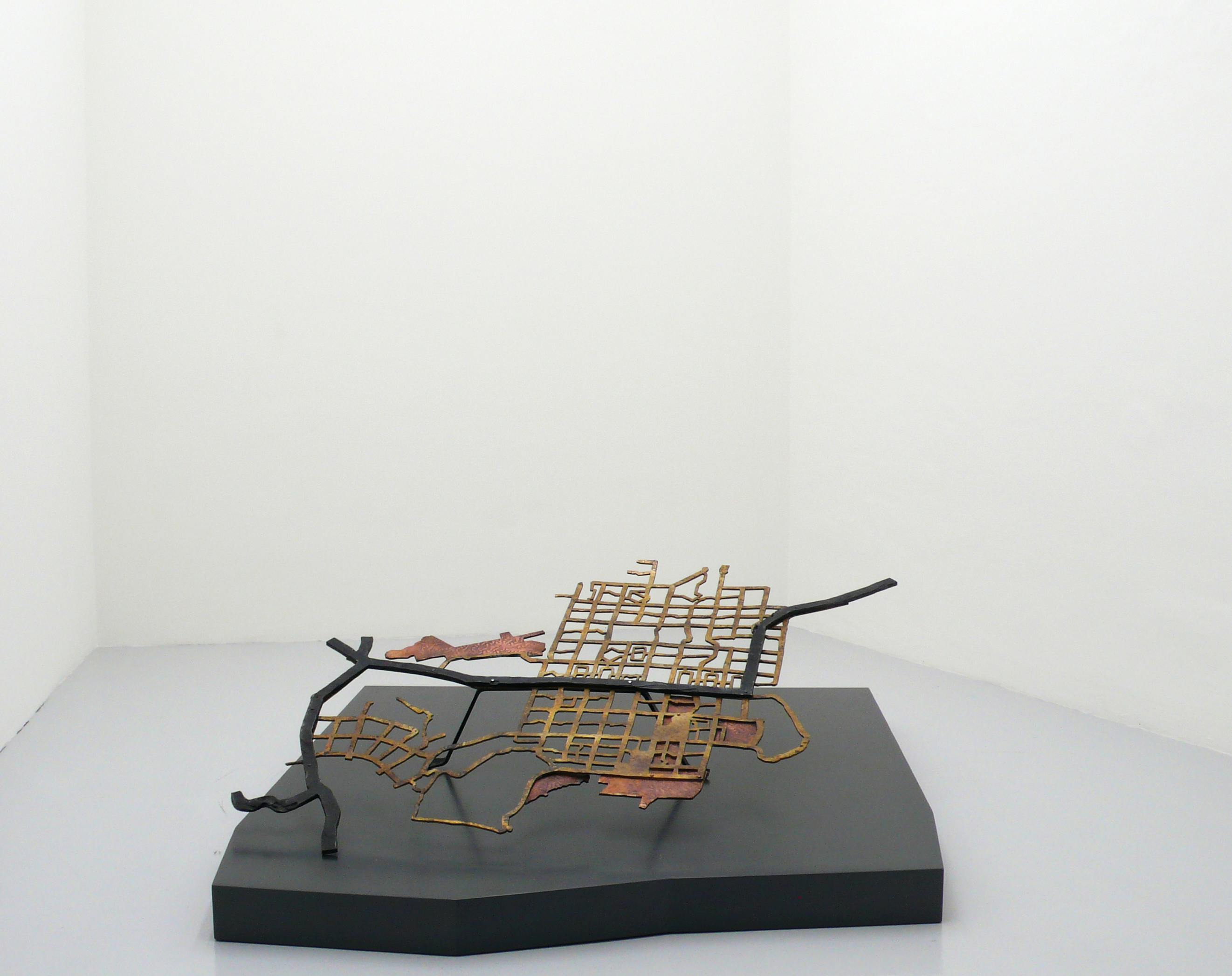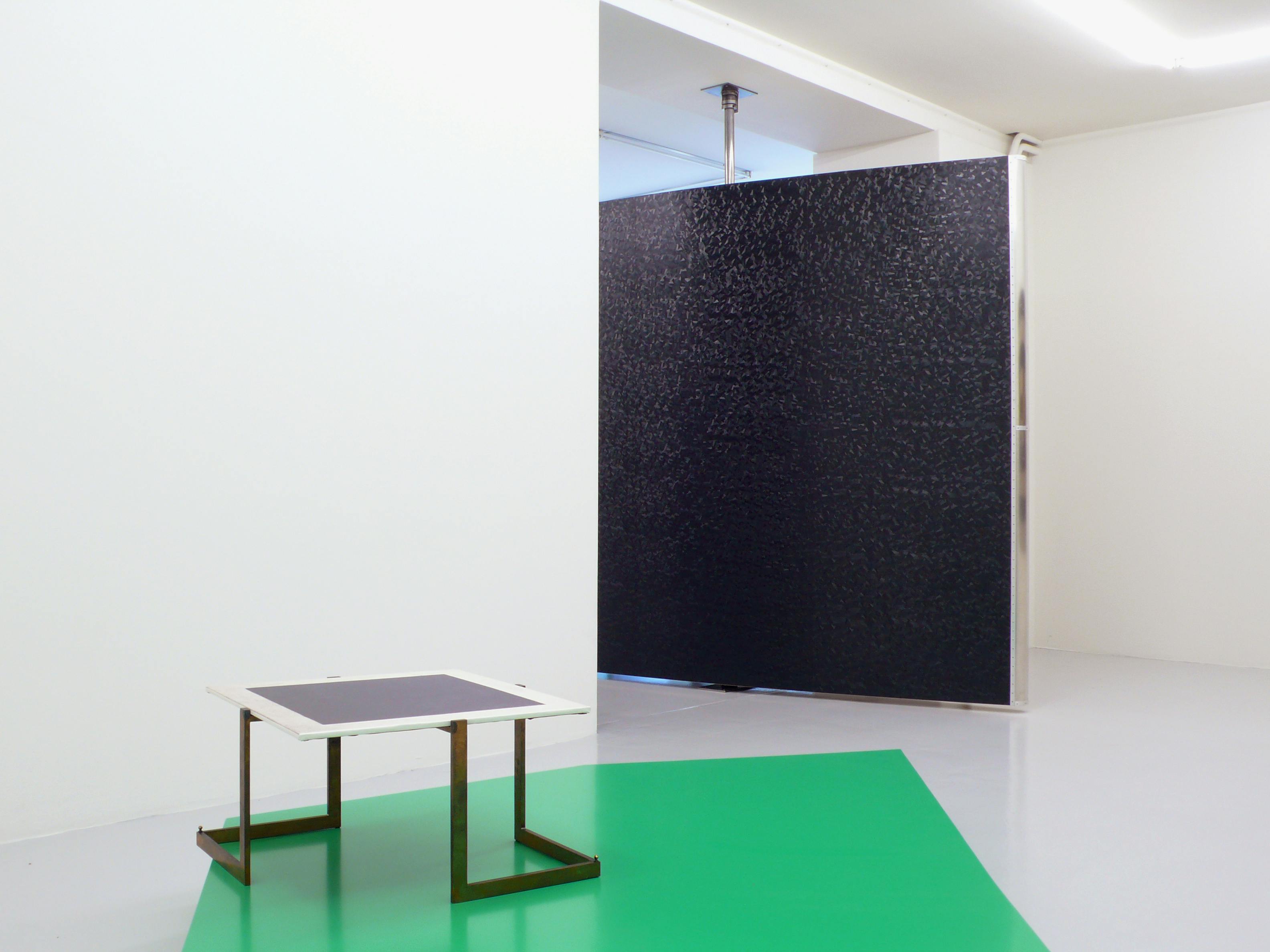We have pleasure in presenting new works by the sculptress and installation artist Rita McBride (born in Des Moines, Iowa in 1960, lives in New York and Düsseldorf). Since the end of the 1980s, her multi- faceted work has been regularly exhibited in galleries and museums, and her monumental sculptures are installed in many cities such as Los Angeles, Paris, Amsterdam and Berlin. After completing her studies at Bard College, Annandale-on-Hudson, New York in 1982, Rita McBride continued her artistic education with John Baldessari at the California Institute of the Arts, where she received the degree of Master of Fine Arts in 1987. Rita McBride was appointed professor of sculpture at the Kunstakademie Düsseldorf in 2003. Together with the Annemarie Verna Galerie, Mai 36 Galerie has been exhibiting works by Rita McBride since 1999. In 2010, the Kunstmuseum Winterthur is to present an extensive exhibition of her work.
Rita McBride's usually huge installations are largely concentrated on architecture, sculpture and design, for example when she translates forms such as garages, canopy roofs, mains systems or street maps into an artistic context. By working with bronze, vinyl and glass, McBride transforms everyday situations into an iconic context and/or formulates socio-critical commentaries.
The works presented in the Mai 36 Galerie refer constantly to Le Corbusier. Thus in Semi-Revolving Divider 405, Rita McBride transferred the structure of the imposing doors of the Parliament Building in Chandigarh into the premises of the gallery, thereby redefining the dimensions and proportions of the rooms and atmospherically charging them with "colour-test" (TV) tapestries. The opening between two of the rooms is occupied by a broad, semi-revolving door made of wood and laminate. Formally, it resembles an ellipse, and a small shelf takes the place of a door handle. In fact, the door does not actually revolve but works with an easily worked mechanism, so that only a slight push is necessary to make it possible to pass through the opening. The evidently movable effect of the door adds an element of flow, although the door is more reminiscent of a wall than an object. The bronze floor installation Settlements (Chandigarh, India), 2009, which is placed on a platform, refers to Le Corbusier's street map of Chandigarh by virtue of its orthogonally orientated form. We also encounter the most brilliant theoretician of “Neues Bauen” in McBride's new print project. Based on the neon work A Little Bit of Dust?, it represents Le Corbusier's concept of the "City of Tomorrow".
With her work, Rita McBride participates in the topical discourse concerning the recent architectural theories that are increasingly influencing art criticism and aesthetic theory. Thus the artist questions architectural stereotypes, the egalitarian character of urban planning, and the resulting social consequences such as loss of orientation and identity. Her sculptures refer to questions concerning our global civilisation and social collaboration. [Text: Dominique von Burg]











